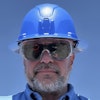NFPA 70B: A New Standard for Electrical Equipment Maintenance

About this course
Learning Objectives
- Outline the scope, purpose, application, and layout of NFPA 70B.
- Summarize essential inputs to an Electrical Maintenance Program (EMP), including other applicable standards, system studies, test records, and manufacturer documentation.
- Define the fundamental structure of an EMP based upon NFPA 70B, including personnel, training, reporting, auditing, and documentation requirements.
- Explain NFPA 70B processes for determining preventive maintenance intervals based on equipment condition assessment.
- Categorize NFPA 70B requirements related to fundamental tests, testing category types, test records, and tools.
- Describe how to use NFPA 70B in conjunction with applicable standards and manufacturer documentation to determine a preventive maintenance scope of work and intervals for electrical equipment.
- Detail the steps and challenges to developing an EMP structured around NFPA 70B.
Course outline
Module 1 • 4 assignments
Introduction and Course Overview
Module 2 • 6 assignments
Origin, Scope, Purpose, and Application
Module 3 • 5 assignments
The Electrical Maintenance Program (EMP)
Module 4 • 6 assignments
Field Testing and Test Methods
Module 5 • 5 assignments
Maintenance Intervals and Equipment Condition
Module 6 • 4 assignments
Fundamental Tests
Module 7 • 3 assignments
Introduction to Equipment-specific Chapters
Module 8 • 10 assignments
Photovoltaic (PV) Systems
Module 9 • 4 assignments
Battery Energy Storage Systems (BESS)
Module 10 • 3 assignments
Electric Vehicle Power Transfer Systems
Module 11 • 2 assignments
Developing Equipment-specific Scopes of Work
Module 12 • 6 assignments
Structuring a PV O&M Program Around NFPA 70B
Module 13 • 4 assignments
Wrapping It Up
Conclusion • 4 assignments
Feedback and Additional Resources
Continuing Education Units
Instructors

Brian Mehalic
Brian Mehalic is a NABCEP-certified PV Installation Professional with over 22 years of experience designing, installing, inspecting, and servicing all types and sizes of PV and energy storage systems. He began his career as Lead Technician and Project Manager at EV Solar Products in Arizona then worked as Project Engineer for O2 Energies in North Carolina. He was a...

Alex Jahp
Alex Jahp joined the solar industry in 2015 out of a passion for the environment, climate change, and sustainable development. He has since worn many hats – and hard hats – with roles in construction, design, and project management on projects from watts to megawatts throughout the US, Peru, and Guatemala. His work has taught him the important role that codes,...